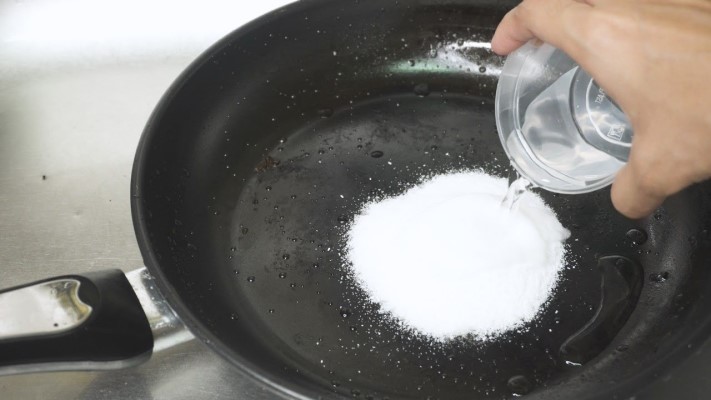If you are looking for an effective way to clean your pots and pans, you’ve come to the right place. With a combination of baking soda and vinegar, you can remove even the toughest stains. The solution is effective at getting rid of stubborn food stains and makes your pans and pots look brand-new. And it only takes a few minutes! So what are you waiting for? Get cleaning!
Contents
Using baking soda
Using baking soda to clean pans is an inexpensive way to restore soiled or stained pots and pans. Using this inexpensive ingredient will also help to neutralize unpleasant odors. It can also be used to dissolve tough grease and stains. You can also combine baking soda with vinegar to make it more effective. Baking soda is a naturally occurring substance made from carbon, sodium, and oxygen molecules. The ingredient is completely safe for consumption and should not cause any adverse effects if used in small amounts.
Using baking soda to clean pans is a great option for stubborn burnt food, as it neutralizes flavor and odor. Scrubbing cast iron can also remove a good seasoning. Before attempting to clean cast iron, however, make sure to pat it dry. After this, rub the pan with vegetable oil. Be sure to coat the sides and bottom of the pan. This will help remove food residue and prevent the pan from looking like it was previously.
Using distilled white vinegar
When you are cleaning a pan, mixing distilled white vinegar and baking soda is an effective way to remove stubborn grease. Mixing baking soda and vinegar in a sink will help the mixture to penetrate deep into the pan, breaking up burned foods. Once mixed, let the mixture sit for a few minutes. Once the mixture has cooled, apply a nylon pad or sponge to scrub away the residue.
This cleaning solution is especially effective for stubborn food stains, including fruit stains. The acidity of vinegar makes it especially effective in breaking down these kinds of stains. This acidic solution is stronger than most household cleaners, making it a triple threat. It’s easy to mix a half cup of white vinegar with a teaspoon of baking soda for every quart of water. The result is a cleaning solution that’s equally effective for a variety of surfaces, including pans and pots.
Using fresh lemon juice
If you’re wondering if using fresh lemon juice to clean baking soda pans is an effective way to get rid of grease, you’re not alone. Citrus fruits can also help you deodorize and remove grease from your microwave. Lemons can be frozen whole or juiced. Either way, the result is a clean and fresh-smelling microwave. A few drops of fresh lemon juice in the microwave will do the trick.
Lemon juice contains five to eight percent citric acid, which is naturally antibacterial and anti-greasing. It can also be used to shine copper and brass. Although lemon juice contains citric acid, it may be overpowering to the surface. To avoid overpowering the surface, make sure to test it on a hidden area first. Lemon juice and baking soda are effective alternatives to harsh chemicals and detergents.
Using Scotch-Brite scouring pad
If you use a sponge to clean baking soda pans, you can use a nonabrasive one. However, if you’re tackling tougher stains, you can use an abrasive scouring pad. Fortunately, there are a few options available, and a Scotch-Brite scouring pad is one of them.
You can also use a baking soda paste, which will make your pans abrasive and break apart tough chunks of burnt food. Just be sure to rinse the paste with water afterward. You don’t want to scratch your pan’s surface or risk damage. This paste is safe for stainless steel and other non-food surfaces. Using a scouring pad on stainless steel pans can be a great way to restore its luster.
Avoiding steel wool
There are a couple of reasons to avoid steel wool when cleaning pans with baking soda. First, you should always wear rubber gloves. This material is not meant for cleaning aluminum or stainless steel. Second, steel wool can snag on threads and become ineffective. Lastly, steel wool can rust if not cleaned properly. Therefore, you should always rinse it with water after use. Using steel wool to clean aluminum or stainless steel pans can be very dangerous, so you should always follow these simple tips to avoid any rust.
First, you should avoid using steel wool on pans that have been scorched or etched. Using steel wool will wear down the chromium film and end up ruining your pan. Second, it’s better to use water instead. The water mixed with vinegar helps get rid of stubborn burnt food. Third, you should always rinse your pan thoroughly to avoid water spots. This prevents stains.

